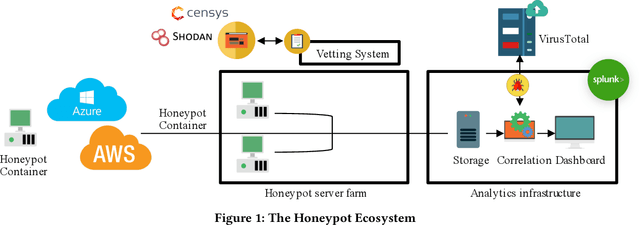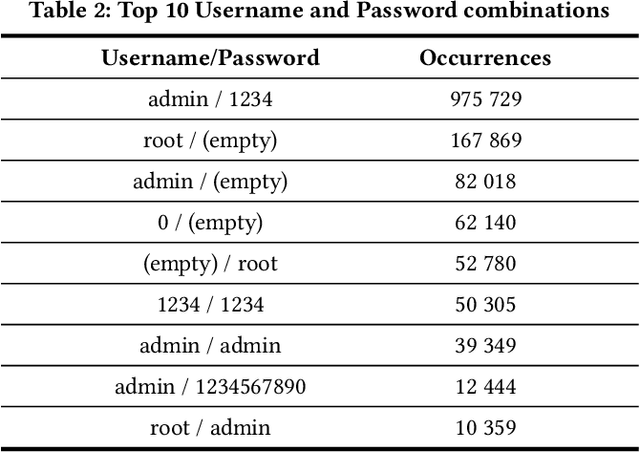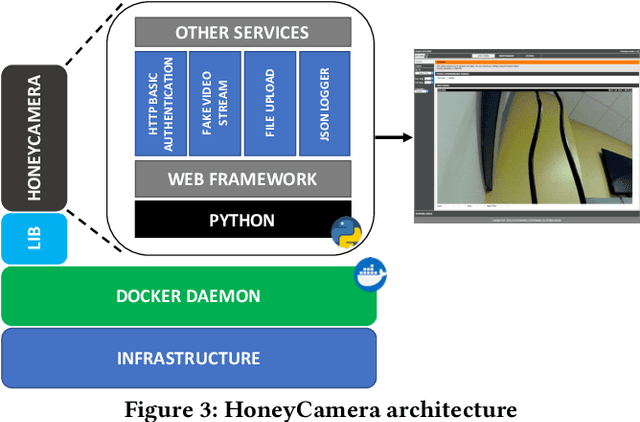Anoop Singhal
What are Attackers after on IoT Devices? An approach based on a multi-phased multi-faceted IoT honeypot ecosystem and data clustering
Dec 21, 2021



Abstract:The growing number of Internet of Things (IoT) devices makes it imperative to be aware of the real-world threats they face in terms of cybersecurity. While honeypots have been historically used as decoy devices to help researchers/organizations gain a better understanding of the dynamic of threats on a network and their impact, IoT devices pose a unique challenge for this purpose due to the variety of devices and their physical connections. In this work, by observing real-world attackers' behavior in a low-interaction honeypot ecosystem, we (1) presented a new approach to creating a multi-phased, multi-faceted honeypot ecosystem, which gradually increases the sophistication of honeypots' interactions with adversaries, (2) designed and developed a low-interaction honeypot for cameras that allowed researchers to gain a deeper understanding of what attackers are targeting, and (3) devised an innovative data analytics method to identify the goals of adversaries. Our honeypots have been active for over three years. We were able to collect increasingly sophisticated attack data in each phase. Furthermore, our data analytics points to the fact that the vast majority of attack activities captured in the honeypots share significant similarity, and can be clustered and grouped to better understand the goals, patterns, and trends of IoT attacks in the wild.
 Add to Chrome
Add to Chrome Add to Firefox
Add to Firefox Add to Edge
Add to Edge